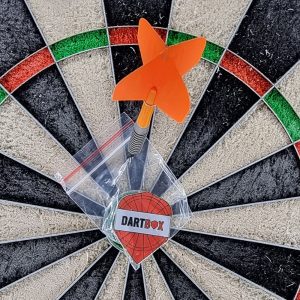A traditional leg of darts starts with each player on 501 points, with the objective of the game being to reach zero by hitting a double with the final dart. Each individual round of 501 is known as a ‘leg’, and after their first few visits in each leg, where the players often throw at the treble 20 segment, the players must begin to start thinking about how they will checkout. Players have to use maths, which is known as ‘counting’ in darts, to eventually leave an even number that is less than or equal to 40, as these numbers have a corresponding double on the dartboard. Finishing a leg is often seen as the hardest and most important part of darts, with the famous phrase ‘trebles for show, doubles for dough’ showing that doubles are key to winning matches, tournaments and ultimately money for professionals. Therefore, it is important for players to be good at hitting areas of the board which are not within the 20 segment, and games such as ‘Round the Clock’ or ‘Bob’s 27’ are used by players to help them improve at hitting different segments all over the board.
The 501 starting score is used to ensure that players cannot finish an entire leg using only the single, double and treble 20 targets. If the starting score was an even number, say if it was 500, players could simply throw their darts at 20 segments, and if they stay straight, they would be able to finish an entire leg without having to switch to a non-20 segment. If 500 was used, a player could finish a leg by hitting two 140s, a 100 and a 120 checkout, or by using any other combination that can be hit using 20s. Players could also hit repetitive scores, such as five 100s in a row to finish the leg. Starting at 500 would render the rest of the board useless for the top professional players, making the game more boring as other areas of the board would rarely be used. A nine-darter could also be hit using only the 20 segment, decreasing its difficulty and making it more common, which would reduce the excitement when one is hit.
By using 501, which is an odd number, there is far more variation between legs of darts, and it increases the difficulty for players of all abilities. It means that players must have good maths skills and begin thinking about leaving a good checkout, which ends on a good double. The professional players will often only want to leave double 20, 18, 16, 8 or 10. This means that over time, common checkout combinations have been developed, which often give players the best chance at getting at least one shot at a double, or the bullseye, within the visit. It means that there are situations that could see pretty much every segment used in a game, as stray darts can leave unfavourable checkouts. 501 also makes nine darters far harder, and keeps them as rare and as exciting as they are today.















